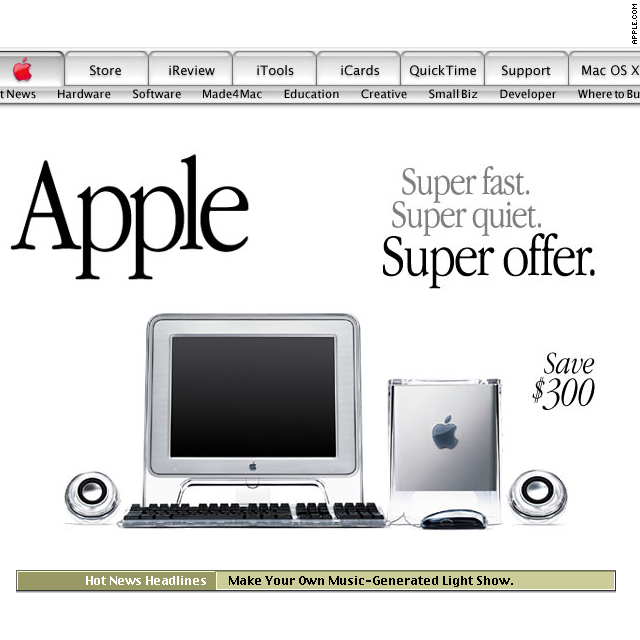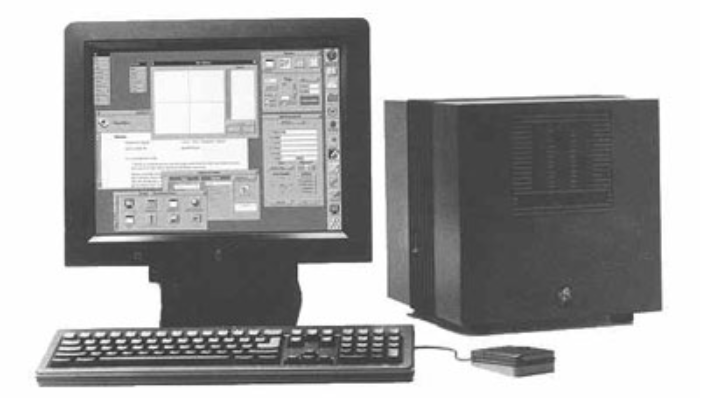C.U.B.E Slide Mac OS
The digital camera captures still microscopy images, streams live videos on your computers, and is compatible with Windows, Mac OS X, and Linux (see version information below). The user-friendly software for Windows offers advanced features including Stitching, EDF (Extended Depth of Focus), video recording, and measurement functions. MacSlope brings fully featured slope stability analysis to the Mac OS Desktop. MacSlope is an app designed to calculate and search for the critical factor of safety of earth slopes, using common methods of limit equilibrium slope stability analysis. Model complex geometries, pore pressure conditions, tension cracks, surcharge loads, and seismic loading. Slideboxx for laptops and desktops is the only PowerPoint library software available for both Mac OS and Windows. It is available in two editions: Slideboxx Prime is fully-featured and able to access PowerPoint files on network shares and your local drives, index PowerPoint metadata, and create PDFs for easier sharing in addition to PowerPoint.
How to Create a Desktop Slideshow in Mac OS X. Changing desktop pictures is no big deal for the Mac OS X users. However, it is really a hectic activity to change the image time and again. To avoid this frustrating aspect, Apple offers special feature that automatically cycles through a series of desktop images. It is just like playing a slide show. The Raspberry Pi is a tiny and affordable computer that you can use to learn programming through fun, practical projects. Join the global Raspberry Pi community.
The Photos app on Mac is a highly versatile tool. Not only does it store and organize your images, you can also set it as your screensaver. Setting a Mac screensaver photos slideshow provides a personal touch to your display because of the special memories represented by the pictures. You can select a set of images from Photos and set them as your screensaver .
This article will teach you how to set up your Mac screensaver using the Photos album with just a few clicks. So when your Mac is not being used, your Mac screensaver photos slideshow will turn your screen into a digital picture frame.
Follow this step-by-step guide to set your Photos library as a screensaver:
- Click the Apple logo and choose System Preferences from the dropdown menu.
- Click Desktop & Screen Saver.
- Go to the Screen Saver tab where you can choose the type of screensaver that you want and the images you want to include from the Mac screensaver photos album.
- In the Screen Saver window, choose the animation you want from the left-side menu. You can choose Floating, Flip-up, Reflections, Origami, Shifting tiles, Sliding panels, Photo mobile, Holiday mobile, Photo wall, Vintage prints, Ken burns, Classic. The last five screensaver options (Flurry, Arabesque, Shell, Message, iTunes Artwork, Word of the Day and Random) do not use images.
- In the right-side column, click the dropdown arrow next to Source to choose which images you want to use. You can choose Recent Photos Events to load the most recent pictures added to the Photos app, or you can click Photo Library.

- When you click Photo Library, you’ll be asked to choose a set of photos to be used for the screensaver. You can click individual photos, Moment, Collection, Place, Year, Face, Album or Shared iCloud album.
- Tick off the Shuffle slide order box if you want the screensaver to cycle through your chosen photos in random order.
- Click Start After at the bottom left of the window to set up the time when the screensaver should start. You can choose from 1 minute to 1 hour from the dropdown menu. Your screensaver will only start playing when your computer has been idle for the time specified here. So if you set the screensaver to start after 30 minutes, your screensaver will only play after your computer has been idle for 30 minutes.
- If you want to show the time when the screensaver is being played, tick off the Show with clock box.
You can see a preview of your screensaver in the upper-right of the window so you have an idea how it will look like.
Pro Tip: Scan your Mac for performance issues, junk files, harmful apps, and security threats
that can cause system issues or slow performance.
Special offer. About Outbyte, uninstall instructions, EULA, Privacy Policy.
If you want your screensaver to be activated whenever you reach one of the screen corners with your pointer, click the Hot Corners button on the lower-right of the screen. Choose the corner you want to use and then click Start Screen Saver from the pop-up menu.
For security purposes, you should set your computer to require a password after your Mac has gone to sleep or your screensaver has been activated. You can set this up by heading to System Preferences > Security & Privacy > General. This will require you to enter your account password after the specified time has passed to protect your computer from unauthorized access.
How to Display Screensaver at the Login Window
The login screen can be boring, but you can prompt your Mac to display a screensaver to add a personal touch to your login window. This feature is available for Macs running OS X v10.6 and later, but your Mac needs to be in a workgroup for this to work.
The screensavers you can use are also limited to Apple screen saver modules, Arabesque, Shell, Spectrum and .slideSaver bundles. Photo-based screensavers, such as Photos album Mac screensaver, won’t work because the Photos library and other photo sources are unavailable when you’re not logged in.
You can set the screensaver for your login window using the OS X Server Profile Manager, the OS X Server WorkGroup Manager, or via Terminal. You can find the complete instructions here, but take note that the page has been archived and is no longer updated by Apple.
Mac Photo Screensaver Not Working
Sometimes screensavers fail to start or won’t load your images even though the Preview shows a perfectly working screensaver. If your screensaver doesn’t work, here are some steps you can take to resolve the issue:
- Restart your Mac by clicking the Apple logo and selecting Restart from the dropdown menu.
- Try other photos. Select a different batch of photos from your library to be used as screensaver.
- Check for processes or apps that prevent your screensaver from starting. To see which process is causing this, open Activity Monitor by accessing it from the Utilities folder. Click the CPU tab and right-click on the Process Name, then select Preventing Sleep from the right-click menu. This will create a new column labeled as Preventing Sleep. Scroll through the list of processes here and when you see the word Yes in the Preventing Sleep column, it means that that particular process or app is preventing your screensaver from running. All you need to do is quit the app and your screensaver should now work.
- Delete your junk files and optimize your Mac. Trash files can cause issues and affect the performance of your computer. You can use an app such as Outbyte MacRepair to totally get rid of junk files, resolve issues on your computer, maximize your RAM, and boost your Mac’s performance.
Conclusion:
Displaying a screensaver is a good way of customizing your screen and making it less boring. We hope that this guide will help you in setting up your personal screensaver using your most treasured photos.
See more information about Outbyte and uninstall instructions. Please review EULA and Privacy Policy.
The Windows software included allows you to make notes, shapes, watermarks, and precise measurements with ease. You can analyze, present, and share images of samples and specimen by simply connecting the camera to your computer's USB port, and inserting the lense into your microscope's eye-tube or trinocular port. Featuring built-in C-mount compatibility and 23.2mm reduction lens adapter, our camera can be attached to any instrument with a C-mount or a 23mm, a 30mm and a 30.5mm photo port. The camera is equipped with CMOS color sensor, and comes with a super speed USB 3.0 cable, four mounting sizes (23.2mm, 30mm, 30.5mm, and 25.4mm C-mount), and instructions
Features:

- High speed USB 3.0 port (compatible with USB 2.0)
- 18MP (4912x3684 pixels) high resolution color digital camera
- Advanced editing, processing and measuring software included
- Compatible with Windows, Mac OS and Linux operating system
- 0.5X reduction lens and 0.01mm calibration slide included
Specifications:
C.u.b.e Slide Mac Os Catalina
Hardware:
- Model: A35180U3
- Image sensor: Aptina 1/2.3' color CMOS
- Resolution: 4912x3684 pixels (18M pixels)
- Pixel size: 1.25 um x 1.25 um
- SNR: 36.3 dB
- Dynamic Range: 65.8 dB
- Frame speed: 5.6fps at 4912x3684, 18.1fps at 2456x1842, 32.2fps at 1228x922
- Interface: USB 3.0 (compatible with USB 2.0)
- Reduction lens: 0.5X, fit to 23.2mm eyepiece tube
- 0.01 mm calibration slide: 1mm/100 division
- Adapters fit 30mm and 30.5mm eyepiece tubes
- Dimensions: 68mm x 68mm x 45mm (no reduction lens on)
- Operating Temperature: -10°C to 50°C
- Power: Direct via USB port
- Mounting: C-mount or eyepiece tube (23.2mm/30mm/30.5mm)
- Gross weight: 0.68 kg
C.u.b.e Slide Mac Os Download
Software:
Please check the chart below for computer operating system compatibility
Packing List:
- 18 MP digital camera (USB3.0)
- 0.5X reduction lens
- 1 CD including Driver, software and user's instruction
- 23.2mm to 30mm adapter
- 23.2mm to 30.5mm adapter
- 0.01mm calibration slide (stage micrometer)
- USB 3.0 cable